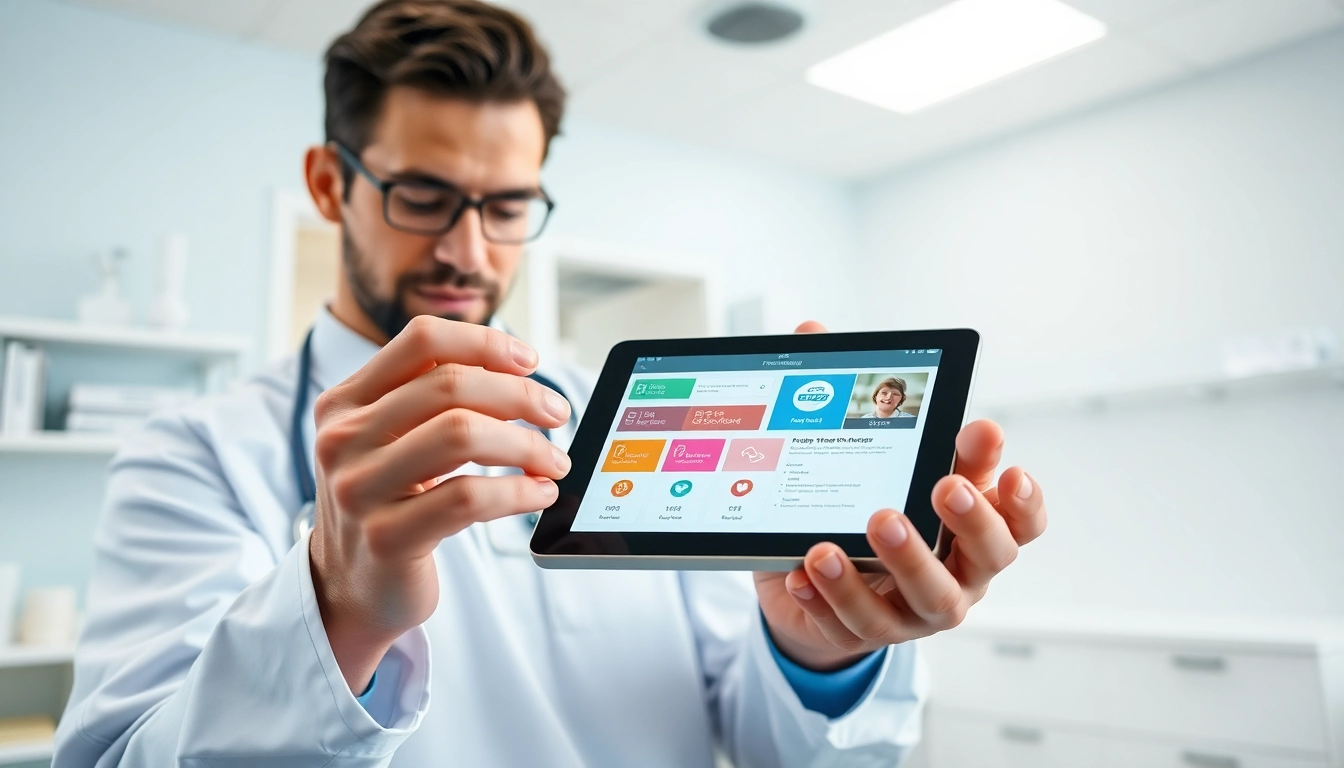Understanding E-Prescribing and Its Benefits
What is E-Prescribing?
E-prescribing, or electronic prescribing, is the process of sending prescriptions directly from a healthcare provider to a pharmacy electronically. This digital method replaces traditional handwritten prescriptions, offering a more efficient and accurate means of prescribing medications. Each e-prescription includes vital patient information, medication details, directions for use, and any necessary refill authorizations. E-prescribing systems help to eliminate the potential for handwritten errors, ensuring that patients receive the right medications without delays.
Benefits for Healthcare Providers
For healthcare providers, the transition to e-prescribing presents numerous advantages. Firstly, it enhances productivity by streamlining the prescribing process. When using best eprescription apps, providers can send prescriptions in seconds, reducing waiting times for patients. It also improves accuracy, which is critical in preventing adverse drug interactions. Providers are alerted to potential allergies or contraindications right at the point of prescribing. Additionally, many e-prescribing systems offer features like patient medication history reviews and formulary checks, aiding providers in making informed decisions regarding appropriate medications.
Impact on Patient Care
The positive impact of e-prescribing on patient care cannot be overstated. By eliminating the legibility issues associated with handwritten prescriptions, e-prescribing significantly reduces medication errors. Patients experience fewer delays in accessing their medications, as e-prescriptions can be sent directly to the pharmacy prior to their arrival. This convenience not only enhances the patient experience but also promotes medication adherence. Furthermore, many e-prescribing systems include reminders for patients regarding their medications, further supporting their health outcomes.
Key Features to Look for in Best Eprescription Apps
User-Friendly Interface
A user-friendly interface is crucial for any healthcare app. An intuitive design allows healthcare providers to navigate effortlessly through the system, minimizing training time and maximizing efficiency. Clinicians should be able to find patient records, issue prescriptions, and access other essential information with minimal clicks. A clean, organized layout enhances usability, making it easier to complete tasks without confusion.
Integration with EHR Systems
Integration with Electronic Health Records (EHR) systems is another vital feature. E-prescribing apps that seamlessly sync with EHRs provide a comprehensive view of a patient’s medical history, medications, and allergies. This connectivity allows for a holistic approach to patient care, ensuring that all healthcare providers involved in a patient’s care have access to the same information, thus reducing the risk of errors and improving patient safety.
Compliance and Security Measures
Healthcare providers must operate within strict regulatory frameworks, making compliance a non-negotiable aspect of any e-prescribing application. The best e-prescription apps adhere to the Health Insurance Portability and Accountability Act (HIPAA) regulations to protect patient information. Additionally, features such as secure user authentication, data encryption, and access controls are essential to safeguard sensitive patient data from breaches.
Comparing Popular E-Prescribing Apps
Ease of Use and Accessibility
When evaluating e-prescribing apps, ease of use and accessibility stand out as critical factors. Applications should be accessible across devices, including desktops, tablets, and mobile phones. This flexibility allows healthcare providers to issue prescriptions on the go or during patient consultations without being tied to a particular location. Apps that offer offline capabilities increase accessibility further, ensuring that prescriptions can still be issued even in areas with unstable internet connections.
Pricing Structures
The cost associated with e-prescribing software varies significantly, so it’s essential for healthcare practices to understand the pricing structures of different applications. Some e-prescribing solutions operate on a subscription basis, charging a monthly fee per provider, while others may offer pay-as-you-go options. Transparent pricing models help healthcare providers to budget for software expenses effectively, ensuring that they can access the features they need without incurring unexpected costs.
User Reviews and Feedback
User reviews and feedback provide invaluable insights into the real-world performance of e-prescribing applications. Healthcare professionals often share their experiences regarding the usability, support, and integration capabilities of different software. By examining user testimonials and feedback from peers in similar practices, providers can make informed decisions when choosing the right e-prescribing app to meet their needs.
Implementation Strategies for E-Prescribing
Steps to Transition to E-Prescribing
Transitioning to e-prescribing necessitates careful planning and execution. The first step involves choosing a suitable e-prescribing solution tailored to the unique needs of the practice. Upon selecting a solution, providers should develop a rollout plan, which includes a timeline for implementation, data migration from existing systems, and necessary infrastructure upgrades. Engaging all staff members in the transition process can foster a sense of ownership, improving overall adoption and success.
Training Staff and Ensuring Compliance
Proper training is critical to the successful adoption of any new technology. Providing staff with detailed training sessions on how to utilize the e-prescribing app effectively will enhance user acceptance and proficiency. It is also vital to keep staff updated on compliance requirements and any system upgrades to maintain regulatory adherence. Additionally, offering ongoing support and resources can empower team members to make the most of the technology.
Monitoring Performance Metrics
To assess the effectiveness of the e-prescribing system, healthcare practices should establish performance metrics. Key performance indicators may include prescription error rates, time taken to process prescriptions, and overall user satisfaction. Regularly monitoring these metrics can highlight areas of improvement and inform further training or support, ensuring that the transition to digital prescribing meets the intended goals of enhancing patient care.
The Future of E-Prescribing Technologies
Emerging Trends and Innovations
The e-prescribing landscape is continually evolving, driven by technological advancements and changing healthcare regulations. One emerging trend is the integration of artificial intelligence (AI) in e-prescribing systems, which can assist clinicians in prescribing decisions by analyzing patient history and medication interactions. Additionally, the use of telehealth is growing, bringing e-prescribing functionalities to virtual visits, thus expanding access to necessary medications for patients while adhering to the convenience of their surroundings.
Potential Challenges Ahead
Despite the advantages, there are challenges in e-prescribing that must be addressed. Issues such as software bugs, interoperability between different EHR systems, and the digital divide – where some healthcare facilities may lack the infrastructure to adopt e-prescribing – can hinder progress. Therefore, providers must remain proactive in identifying and addressing these challenges to ensure seamless patient care.
Preparing for Upcoming Changes in Regulations
Healthcare providers must stay informed about new regulations affecting e-prescribing. Anticipating advancements in healthcare laws and compliance requirements will enable practitioners to adapt their practices accordingly. Being proactive in learning about regulatory changes can facilitate smoother transitions and ensure ongoing compliance, ultimately benefiting patient care and operational efficiency.



